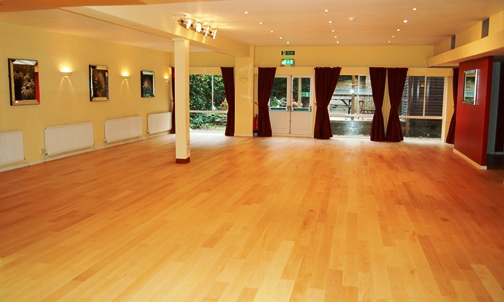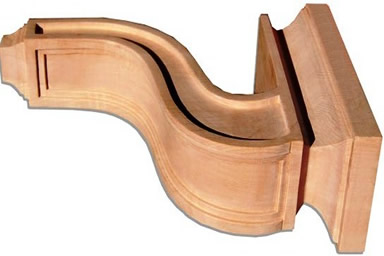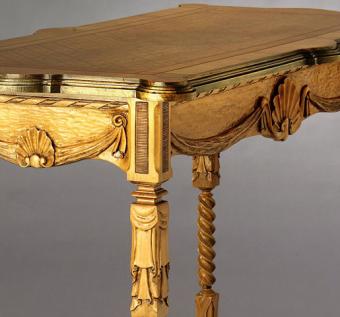When we think of maple the first use to which the wood is put is the only one which occurs to us. The extremely hard, tough surface of maple which takes on a higher polish as it is subjected to wear has made it a remarkable material for floors. But maple is also very good for wood trim which is to be finished in the lightest possible natural wood color. The grade known as white maple, when finished with white shellac alone or with white wax, makes a truly beautiful finish which cannot be duplicated by any other wood. Sometimes it is bleached before finishing to make it even whiter. And maple, of course, is much used for furniture, especially the curly and the bird's-eye maples. For floors which are subject to much traffic, maple has no equal,schools, dance floors, kitchens, bedrooms, halls, etc.
Maple is a close-grain, very hard, fine-textured, tough and strong wood. The sapwood is very light in color, while the heartwood is a light brown. The grain figure is subdued but beautiful and quite uniform and interesting as well.
All maple is light in color, but the white, clear grade is especially light. It is the sapwood from the outside of the log, winter-sawed and end piled in sheds to prevent staining. It is ivory white and the finest grade of maple flooring and lumber produced. Birch floors and trim give an airy, cheerful color to a room which reminds one of the northern forests where the best maple trees grow.
Maple is what is called a single-growth wood, meaning that when the present supply is exhausted there will be no more to take its place. United States Government forestry experts estimate that within twenty-five years the present supply of maple will be gone. Then it will become as costly as walnut and similar rare woods because the rate of growth is very slow and reforestation is not equal to producing a growth equal to the natural and original stand of timber.
The growth of maple is common to England, Central Europe and America. Curly maple is the wood which results from trees which have made a twisted growth and which peculiarity has been preserved by special methods of cutting the lumber. It has a curly, mottled figure quite similar to satinwood. Bird's-eye maple is sugar maple. The peculiar bird's-eye knots are presumed to be the result of buds or shoots which formed in the wood but were unable to penetrate the hard, tough bark and thus come out to form branches. Sugar maple when newly cut is a creamy white in color, but it darkens to a golden yellow with age. In finishing this bird's-eye maple the best practice is 'to put on a toner in the form of a water solution of tannic acid. This brings out the little eyes or knots interestingly. The toner is followed with a weak water stain.
The heartwood of maple is rather too dark a brown to be finished in light gray stains and it cannot be bleached enough to make it suitable. It, however, makes finishes which are quite as beautiful and similar to mahogany, brown, red or antique. The white maple, or sapwood of the tree, produces the finest kind of silver gray, also driftwood and Kaiser grays by correct staining methods. A select grade of maple which has a red tone is sometimes used to represent cherry and when finished by skillful men it makes a wonderfully fine appearance.
Maple makes a first class foundation for enamel finishes because of its even, close grain texture and uniform color and absorption.
Maple floors are, of course, often oiled when the traffic is very heavy, as in schools. That makes a finish which is easy to keep clean and a uniform color, but of course it darkens the color of the wood.




Thus what exotic class TEAK is for ASIA- Maple is for Europe. These days CHINA, INDIA, JAPAN, INDONESIA are doing more and more carved furniture and musical instruments in HARD MAPLE and SYCAMORE.